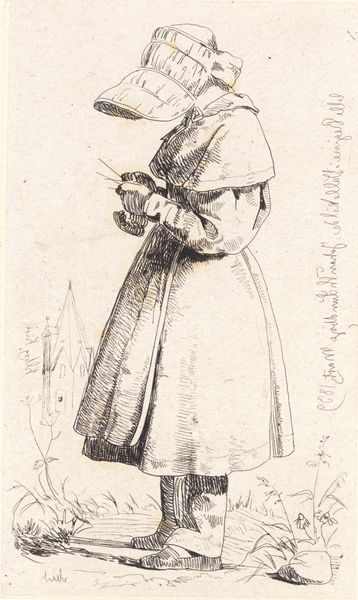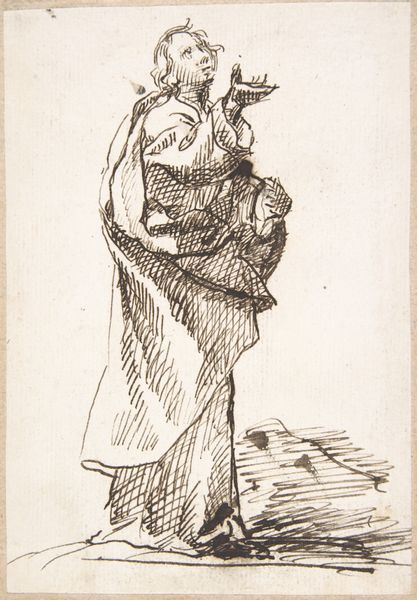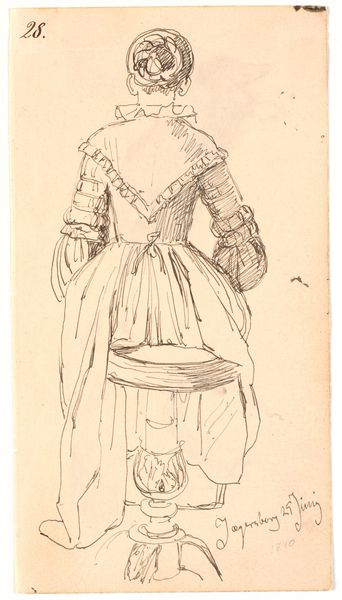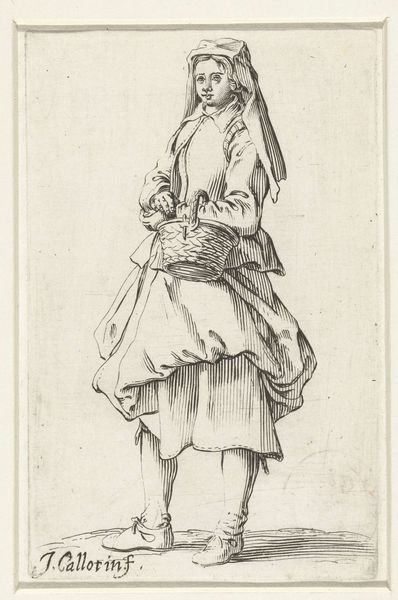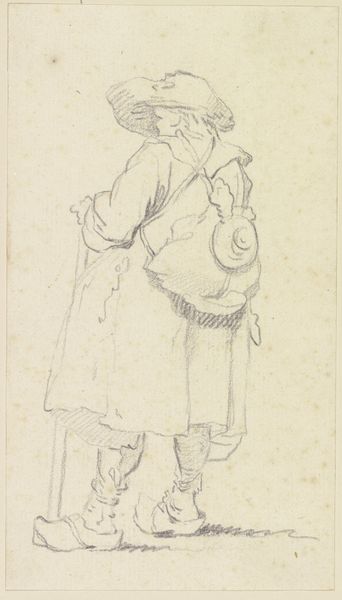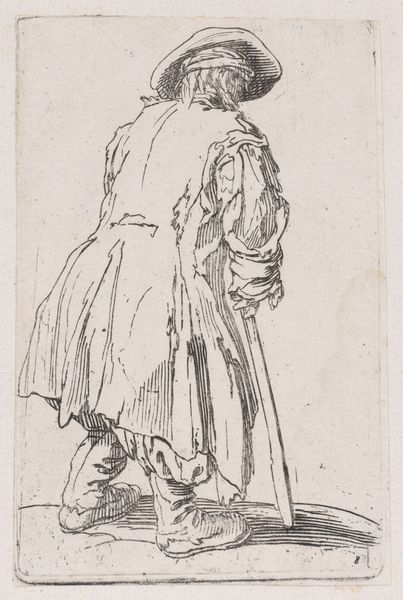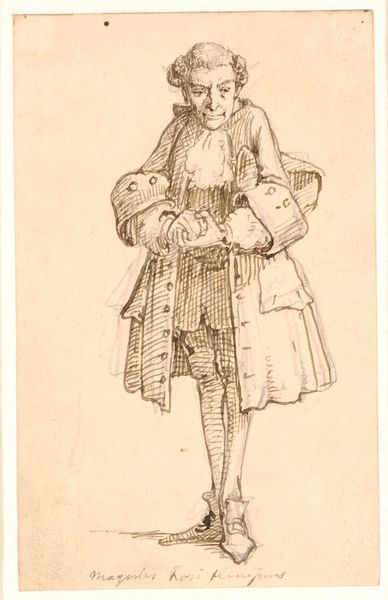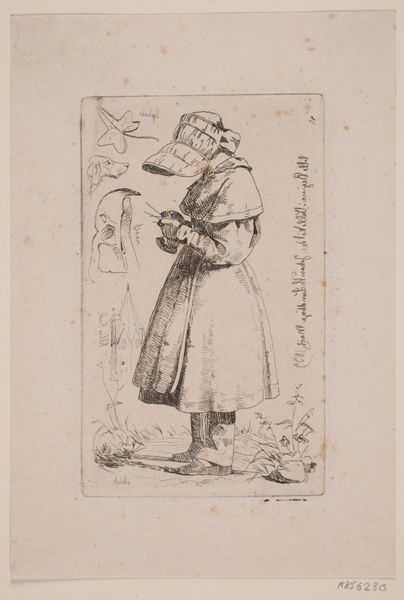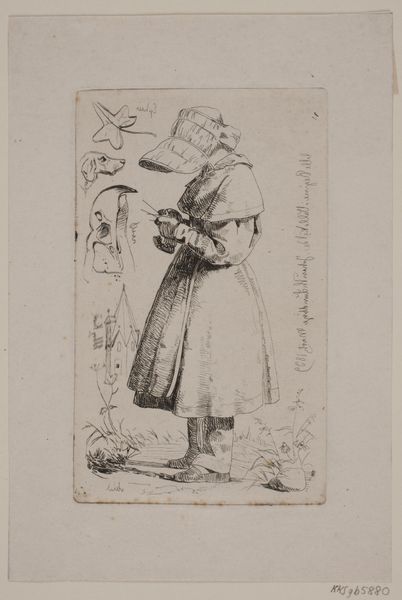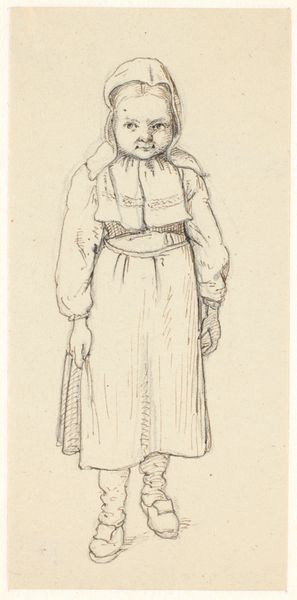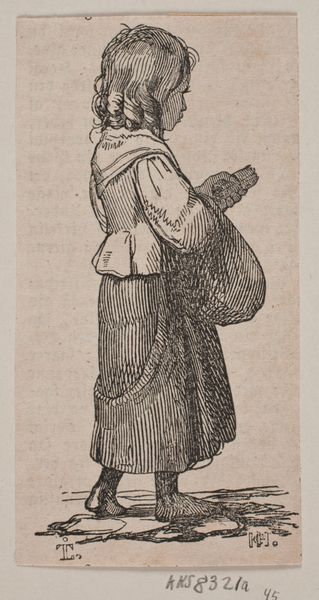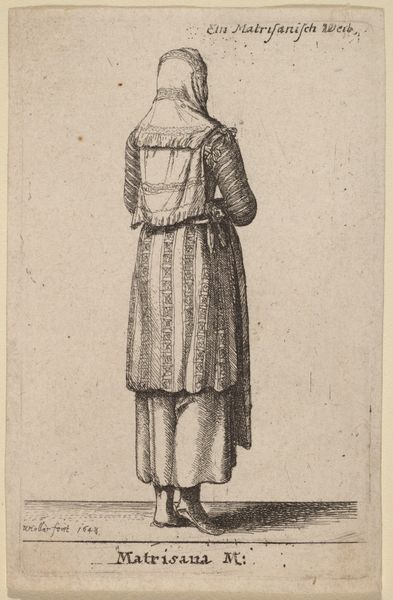
drawing, print, etching, ink
#
portrait
#
drawing
# print
#
etching
#
landscape
#
figuration
#
ink
#
romanticism
Dimensions: 122 mm (height) x 74 mm (width) (plademaal)
Editor: Here we have Johan Thomas Lundbye's "Little Regine in Vallekilde," from 1839. It's an etching, so ink on paper. I'm immediately struck by the figure’s clothing; it seems to denote a certain class and her task as a knitter. What do you see in this piece, looking at the way it was made and what it depicts? Curator: I see an image deeply embedded in its own social and material reality. Lundbye’s choice of etching, a readily reproducible printmaking technique, speaks to a desire to circulate this image beyond the elite. Think about the paper itself – likely a locally sourced material, handmade and hinting at the labour involved in its production. What does the knitting suggest to you about the girl’s expected future labour? Editor: I guess that it suggests her destiny will probably be more "hands-on," perhaps in a farm environment. It isn’t exactly the labour of a "refined" young lady. The etching emphasizes the detail of the coarse fabrics, highlighting the materiality of her existence. It isn't idealized, you know? Curator: Exactly. Consider how the image naturalizes a social hierarchy. Her dress, the tools she uses: these are all products of a specific economic and social system. The print makes that labor visible. Would you say it is then a critique or, maybe, an affirmation of the established class system? Editor: Hmm…good question. I think it’s more an honest, even romanticized, observation. Lundbye isn't necessarily condemning the situation but depicting it. What have we learned from this detailed rendition about production, labor, and how materials shape both the art and the subject’s life? Curator: We’ve hopefully realized that art is never separate from its material conditions. "Little Regine" becomes a window into understanding the intertwined relationships of labor, materials, and the construction of social identity in 19th-century Denmark. It gives us so much food for thought.
Comments
No comments
Be the first to comment and join the conversation on the ultimate creative platform.
